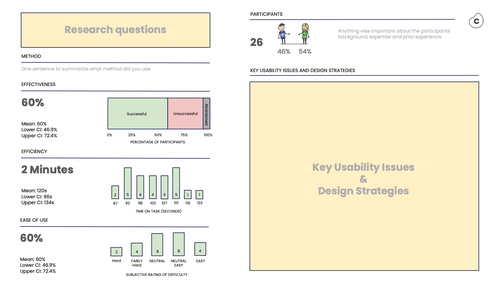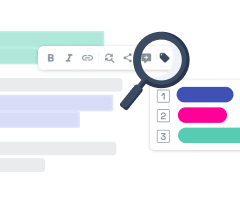
Communicating the Value of UX as a Researcher
How do you handle it when people are skeptical of the value of UX research? A critical attitude is not a bad thing, and it's an excellent opportunity to get into the conversation and demonstrate the value of user experience research. Here are some techniques that help you tackle UX skepticism as a researcher. Abby Wanyu Liu, a Senior UX Researcher at Celonis, shared personal learnings on communicating the value of UX. This article summarizes Abby’s techniques that she shared in a UX Research Munich Community talk.
#1 Let people experience it first hand
Invite your colleagues to try out an interactive prototype themselves. Invite them to join research sessions with users. Invite your team and stakeholders to experience the designs themselves and let them slip into the users’ shoes. Or at least bring them a step closer to immersing themselves into the user’s experience. Just as when you're doing the research yourself, experiencing a design and seeing users experience a design first hand rather than reading a report helps to understand a finding. Without first-hand experience, it can be challenging to communicate and transmit the value of UX as a researcher.
#2 People love numbers
As researchers, it’s crucial to have empathy for your audience. Depending on your context, including numbers can be a helpful component of UX value communication, especially when there’s already a strong quantitative culture. So when you have qualitative and quantitative data, try to share both. This can help you to convey the value of UX research in general. Abby, for example, does this by creating a TL;DR-overview for research projects.
TL;DR means “too long; didn’t read” which demonstrates the advantage of preparing overview sheets: They allow a glimpse of research insights to make people interested and learn more about the research findings and, therefore the users. Here’s an example of how this looks like for a usability test:

But be careful that you stick to valuable information and don’t fall into the trap of quantifying qualitative research in any case.
#3 Increase visibility with a UX dashboard
When working in a company setting, a dashboard can be a helpful way to increase the visibility of user research. At Celonis, Abby introduced a digital dashboard that presents different research indicators, like:
a calendar view that shows when the team has direct contact with users in research sessions
numbers around current UX activities (for example, five moderated usability tests conducted), involved users, and involved researchers
references to internal project planning tools
Here's a glimpse of what that looks like for Abby and her team:

The creation is a fluid process, and you can create and enhance the dashboard in several stages. Start by maintaining the information manually and making it part of daily/weekly team routines like Abby. This ensures that the whole team is aligned and aware of the UX efforts.
#4 Raise awareness with talks
Another promising technique to communicate the value of UX as a researcher is by helping everyone around you to learn about UX research and UX in general because “UX” has become quite a buzzword. Every conversation about UX, UX research, and user research takes you a step forward. Participating in and giving internal lightning talks (for example at brown bag sessions) or sharing research approaches with another team, will help you raise awareness of UX research.
#5 Establish research blueprint and best practices
This tip is relevant for all researchers who find themselves in a setting where non-research colleagues will go out and conduct some research themselves. Of course, the required research skills can't be learned just by anyone with a tutorial. But you as a researcher can guide your colleagues to conduct research more successfully by establishing internal descriptions, templates, and best practices. By this, you will give your colleagues research guidance, and therefore guide the whole research practice at your organization. Don't get overwhelmed; start with your most common research method and critical remarks, and let this grow over time.
#6 Create touchpoints from onboarding on
Getting new joiners in your organization in touch with user research right from the beginning is another component to communicate the value of UX as a researcher. When there's the chance, make user research and learnings from researching the users' experience a fixed element of onboarding programs or onboarding resources that new employees receive right from the start.
Conclusion
Communicating the value of UX as a researcher can be tough. But there are some techniques that help you to convey the value of UX in your organization. Here's a summary:
Let people experience it first hand
People love numbers (so include numbers you have)
Increase visibility with a UX dashboard
Raise awareness with talks
Establish a research blueprint and best practices
Create touchpoints from onboarding on
Stay patient, continue communicating the benefits and necessity of UX research step by step and make it a part of regular company events (like quarterly plannings). Even if it’s a slow process, it will be rewarding and powerful when the values are shared widely, not just by the UXers.
This article is inspired by Abby’s talk at UX Research Munich Meetup in November 2021. You can watch the full talk here:
/f/99166/1280x720/24504adabc/maxresdefault.jpeg)







